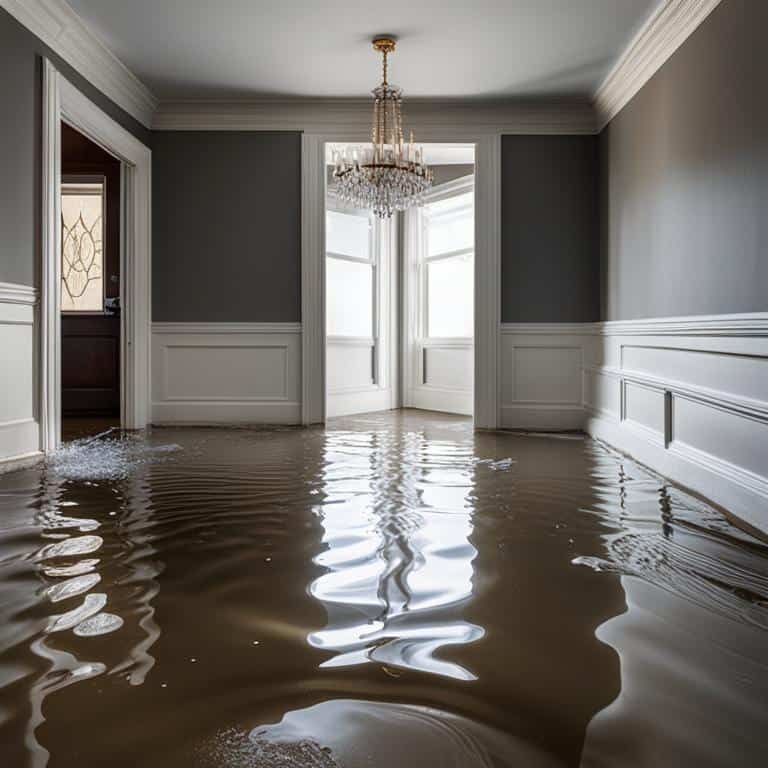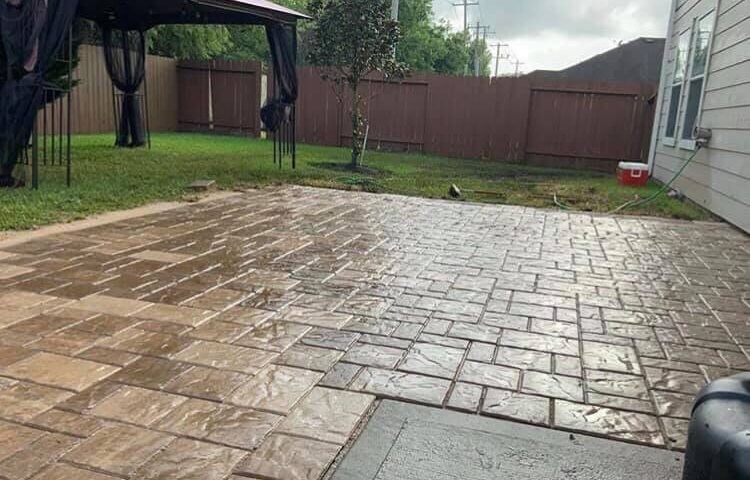Water damage can strike unexpectedly, causing serious problems for homeowners and businesses in Oshawa. Whether it’s due to a burst pipe, flooding, or sewage backup, taking immediate action can minimize damage and prevent health hazards. In this guide, we’ll walk you through the crucial steps to handle Oshawa water damage effectively and discuss the importance of professional Biohazard Cleanup services.
1. Ensure Safety First
Before taking any action, prioritize safety. Water damage can create hazardous conditions, including electrical hazards, weakened structures, and contaminated water. Here’s what you should do:
- Turn off electricity and gas if you suspect water has come into contact with electrical outlets or appliances.
- Avoid contact with floodwater, especially if it may contain sewage or other biohazards.
- Wear protective gear such as rubber boots, gloves, and masks when entering affected areas.
2. Identify the Source of Water Damage
To prevent further damage, locate the source of the water intrusion and stop it if possible. Common causes include:
- Burst or leaking pipes
- Roof leaks
- Flooding from storms or heavy rainfall
- Sewage backups
- Appliance malfunctions (washing machines, dishwashers, or water heaters)
If the source is plumbing-related, shut off the main water supply and call a plumber immediately.
3. Document the Damage for Insurance Claims
Before you start cleaning up, document the extent of the damage. This step is essential for insurance claims and ensuring adequate compensation. Follow these tips:
- Take clear photos and videos of all affected areas.
- Make a detailed list of damaged belongings.
- Keep receipts for any emergency repairs or expenses.
4. Remove Excess Water and Moisture
Once it’s safe, begin water removal to prevent mold growth and structural damage. Here’s how you can do it:
- Use buckets or wet vacuums to extract standing water.
- Open windows and doors for ventilation.
- Set up dehumidifiers and fans to speed up drying.
- Remove wet carpets, furniture, and personal items to prevent mold formation.
For large-scale Oshawa water damage, professional water extraction services can provide industrial-grade equipment to remove moisture quickly and efficiently.
5. Assess and Address Contaminated Water
Not all water damage is the same. The level of contamination affects the cleanup process:
- Category 1 (Clean Water): From broken pipes or appliance leaks; safe to handle with proper drying.
- Category 2 (Gray Water): Contains contaminants from dishwashers, washing machines, or minor flooding; requires disinfection.
- Category 3 (Black Water): Includes sewage, floodwaters, or water from natural disasters; requires expert Biohazard Cleanup due to health risks.
For black water damage, never attempt cleanup on your own. Call certified professionals who specialize in Biohazard Cleanup and sanitization.
6. Prevent Mold Growth
Mold can develop within 24-48 hours after water damage. To prevent it:
- Dry all affected areas thoroughly.
- Remove wet drywall, insulation, and carpeting if necessary.
- Apply antimicrobial treatments to prevent mold growth.
- Monitor for musty odors or visible mold spots.
If mold is already present, seek professional mold remediation services to ensure complete removal and prevent future outbreaks.
7. Sanitize and Disinfect the Area
Water damage can introduce bacteria, viruses, and harmful contaminants. Proper disinfection is crucial:
- Use EPA-approved disinfectants on all surfaces.
- Wash and sanitize affected clothing, fabrics, and furniture.
- Dispose of unsalvageable items safely.
For extensive contamination, professional Biohazard Cleanup services can eliminate health hazards and restore your property to a safe condition.
8. Repair and Restore Damaged Property
Once the area is clean and dry, begin repairs to restore your home or business:
- Replace damaged drywall, flooring, and insulation.
- Repaint walls and ceilings if necessary.
- Check electrical systems and plumbing for safety.
- Consider waterproofing solutions to prevent future damage.
Hiring a professional water damage restoration company in Oshawa can streamline this process and ensure quality repairs.
9. Contact Your Insurance Provider
Most homeowners’ insurance policies cover water damage caused by sudden events like burst pipes or appliance malfunctions. Here’s what to do:
- Notify your insurer as soon as possible.
- Provide all documentation, including photos and repair estimates.
- Work with their adjuster to assess damage and coverage.
If your claim is denied or coverage is unclear, consider seeking assistance from a public adjuster or legal expert.
10. Hire Professional Water Damage Restoration Services in Oshawa
Dealing with Oshawa water damage can be overwhelming. Professional restoration companies offer comprehensive services, including:
- Emergency water extraction and drying
- Mold remediation
- Structural repairs
- Biohazard Cleanup for contaminated water
Choosing certified professionals ensures a thorough and safe recovery process, protecting your home and health.
Experiencing water damage in Oshawa can be overwhelming, but taking immediate action can minimize damage and prevent further issues. Whether caused by flooding, burst pipes, or sewage backups, here’s what you should do right away.
1. Ensure Safety First
Turn off the electricity and water supply to prevent hazards. If the water is contaminated, avoid contact and wear protective gear.
2. Identify the Source and Stop It
Locate the source of water intrusion, whether it’s a leaking pipe or external flooding, and stop it if possible.
3. Document the Damage
Take photos and videos of the affected areas for insurance claims. Keep receipts for repairs and restoration services.
4. Remove Excess Water
Use buckets, mops, and wet vacuums to extract standing water. Open windows and use fans or dehumidifiers for faster drying.
5. Prevent Mold Growth
Mold can form within 24-48 hours. Dry surfaces thoroughly and remove wet carpets and furniture if necessary.
6. Seek Professional Help
For extensive Oshawa water damage or Biohazard Cleanup, hire professional restoration services to ensure thorough drying, sanitization, and repairs.
Acting fast can protect your home, health, and belongings from long-term damage.
Water damage can be a devastating experience for homeowners and businesses in Oshawa. Whether it’s caused by a burst pipe, heavy rainfall, or sewage backup, acting quickly is essential to prevent further damage and health risks. Here’s what you should do immediately after Oshawa water damage occurs.
1. Prioritize Safety First
Before assessing the damage, ensure the area is safe. Water can cause electrical hazards, structural damage, and contamination risks. Take these precautions:
- Shut off electricity and gas if water has reached outlets or appliances.
- Avoid contact with floodwater, especially if it contains sewage or chemicals.
- Wear protective gear such as gloves, boots, and masks when entering affected areas.
2. Identify and Stop the Water Source
Locating the source of the water damage is crucial to preventing further flooding. Common sources include:
- Burst or leaking pipes
- Roof or foundation leaks
- Sewer backups
- Malfunctioning appliances
If the issue is plumbing-related, turn off the main water supply and contact a professional plumber.
3. Document the Damage for Insurance Claims
To support your insurance claim, document all visible damage. Follow these steps:
- Take photos and videos of affected areas, furniture, and belongings.
- Keep a detailed list of damaged items.
- Save receipts for emergency repairs or temporary housing expenses.
4. Remove Excess Water
Water removal should begin as soon as possible to minimize mold growth and structural damage:
- Use buckets or wet/dry vacuums to remove standing water.
- Open windows and doors for better ventilation.
- Set up fans and dehumidifiers to speed up drying.
- Remove wet carpets, furniture, and personal items.
For extensive Oshawa water damage, consider hiring professional water extraction services.
5. Assess and Handle Contaminated Water
Water damage is classified into three categories:
- Category 1 (Clean Water): From broken pipes or appliance leaks; generally safe to handle.
- Category 2 (Gray Water): Contains contaminants from washing machines or dishwashers; requires disinfection.
- Category 3 (Black Water): Includes sewage, floodwater, or contaminated sources; requires professional Biohazard Cleanup due to health risks.
For black water damage, always rely on experts to ensure safe cleanup.
6. Prevent Mold Growth
Mold can start growing within 24-48 hours of water exposure. To prevent it:
- Dry affected areas thoroughly.
- Remove and replace damaged drywall, insulation, or flooring.
- Use mold-resistant treatments on surfaces.
- Monitor for musty odors or mold spots.
7. Sanitize and Disinfect the Area
After drying, all affected areas must be cleaned and disinfected:
- Use EPA-approved disinfectants on surfaces.
- Wash affected clothing and fabrics.
- Dispose of items that cannot be salvaged.
For severe contamination, hire Biohazard Cleanup specialists to ensure a thorough and safe restoration.
8. Contact Your Insurance Provider
Most homeowners’ insurance policies cover water damage caused by sudden events. Take these steps:
- Notify your insurer as soon as possible.
- Provide photos, videos, and documentation.
- Work with an adjuster to assess damage and estimate repairs.
9. Hire Professional Water Damage Restoration Services in Oshawa
Professional restoration companies can handle everything from water extraction to mold remediation. Services typically include:
- Emergency water removal
- Structural drying
- Mold prevention
- Biohazard Cleanup
10. Take Preventive Measures for the Future
After recovery, take steps to prevent future water damage:
- Inspect and maintain plumbing and roofing.
- Ensure proper drainage and sump pump maintenance.
- Install water leak detectors.
- Waterproof basements and crawl spaces.
Final Thoughts
Water damage in Oshawa requires immediate action to minimize property damage and health risks. By following these steps—ensuring safety, stopping the water source, drying affected areas, and hiring experts—you can restore your property efficiently. If the damage involves hazardous contaminants, professional Biohazard Cleanup is essential for a safe and effective recovery.
For extensive contamination, professional Biohazard Cleanup services can eliminate health hazards and restore your property to a safe condition.
Act fast and seek professional help to handle Oshawa water damage effectively, ensuring a safe and restored home for you and your family.





